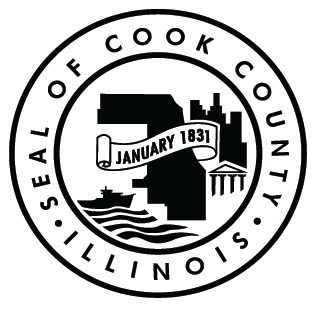Public Input Needed to Help Cook County Plan for Natural Hazards
Last weekend’s storms reminded Illinois residents the extent and kind of damage a weather event can cause. While Cook County escaped serious damage, it’s been impacted in the past by snowstorms, tornadoes and other natural incidents, including the damaging floods in April.
That is why the Cook County Department of Homeland Security and Emergency Management (DHSEM) is developing a comprehensive Multi-Jurisdictional Hazard Mitigation Plan to prepare for natural disasters and their impact.
The county wants residents to be part of this process. DHSEM is hosting a series of public meetings in December to share the progress with residents. Computer workstations set up at the meetings will show residents which natural hazards have the potential to affect their property. Information at the meetings will explain the steps residents can take to reduce the impact of those hazards on their property and family. The meetings will be held:
Monday, December 9
6:00 p.m. – 8:30 p.m.
Homewood Village Hall
2020 Chestnut Road
Homewood, IL 60430
Wednesday, December 11
6:00 p.m. – 8:30 p.m.
Northbrook Village Hall
1225 Cedar Lane
Northbrook, IL 60062
Thursday, December 12
6:00 p.m. – 8:30 p.m.
Village of Westchester
10300 W Roosevelt Road
Westchester, IL 60154
DHSEM also wants to solicit information and comments from residents to ensure all voices are heard and considered. During this process residents are urged to contribute by sharing information about an area’s vulnerability to hazards based on personal experience.
Under the leadership of Cook County Board President Toni Preckwinkle, DHSEM has formed a coalition to pool resources and create a uniform hazard mitigation strategy, which will make the county eligible to receive funds through the federal Hazard Mitigation Grant Program. The goal is to reduce the county’s vulnerability to natural hazards while protecting the health, safety, welfare and economy of communities by identifying cost-effective strategies to reduce their impact.
“We have a responsibility to do everything in our power to prepare for hazards this county may face and have plans in place to protect our residents and our infrastructure,” Preckwinkle said.
When completed, Cook County’s plan will be the largest of its kind, according to the Federal Emergency Management Agency. Currently, 116 of the county’s 134 municipalities have partnered with DHSEM.
“While we cannot control the weather, we can control how we prepare, respond to and recover from natural disasters,” said Michael Masters, executive director of DHSEM.
The public is also encouraged to take a 10-minute survey about natural hazards in Cook County at www.surveymonkey.com/s/CookCountyHazMit. The results will provide vital information to the team preparing the plan.
For more information about the Hazard Mitigation Plan, visit www.cookcountyhomelandsecurity.org/hazard-mitigation-plan/.
The Cook County Department of Homeland Security and Emergency Management integrates first responders, their departments and resources from 134 Cook County municipalities, and serves as the central agency in Cook County for coordinating efforts to prevent, protect against, mitigate the effects of, respond to, and recover from all incidents, whether man-made or natural. For more information, visit our website at www.cookcountyhomelandsecurity.org.
